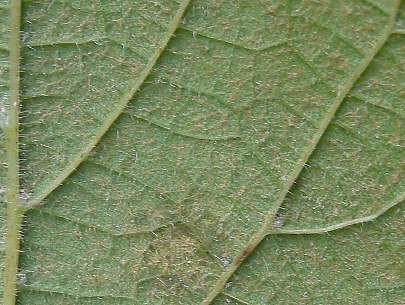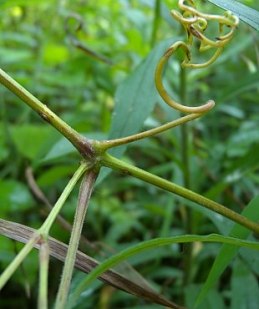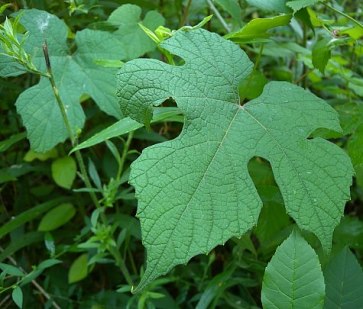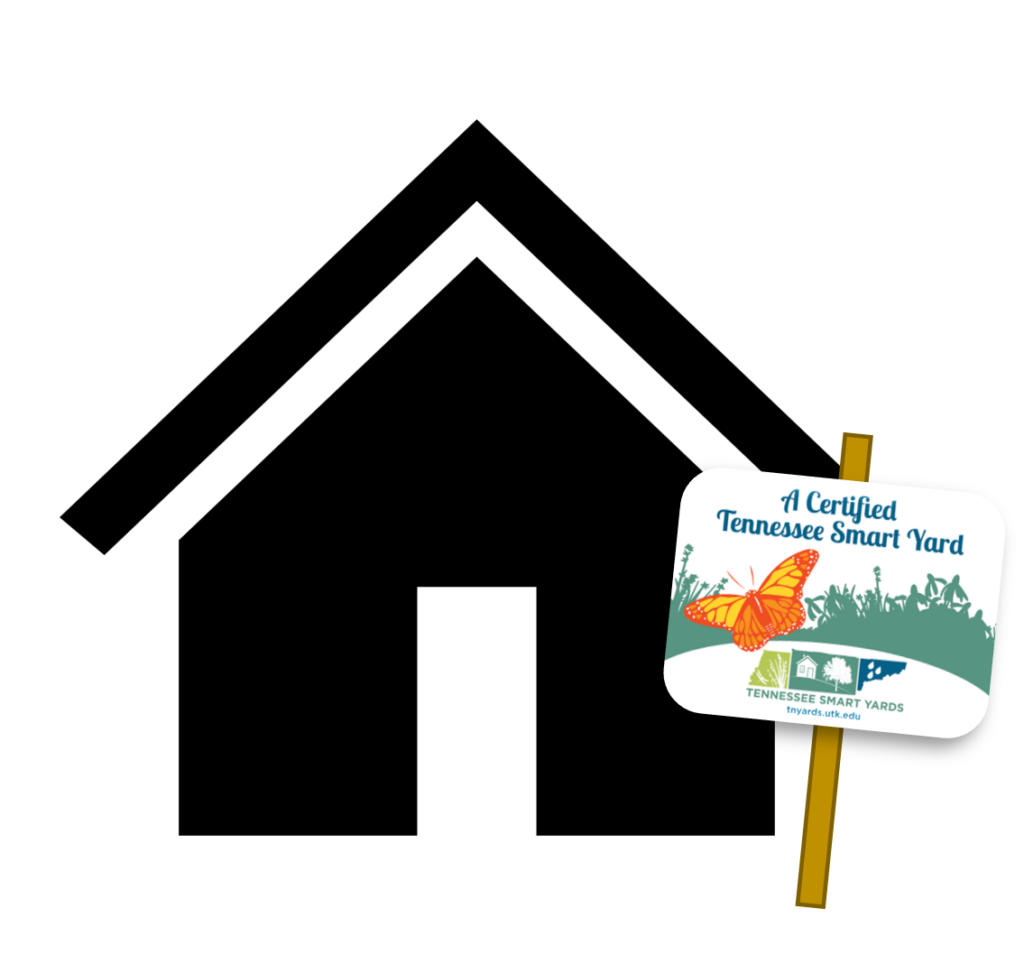
Common Name: Summer Grape
Full to part sun; medium moisture level; prefers fertile loam soil but suitable for light sandy, medium loam and heavy clay soils; pH tolerant but prefers alkaline.
Up to 30 feet height; blooms late spring to early summer; greenish yellow flowers; dark purple or black berries.
Growth Rate: Fast
Maintenance: Any pruning best done in winter when plants are dormant; otherwise they bleed profusely (however it is not fatal). Subject to black rot fungus and beetle damage.
Propagation: Seed germination is very poor. Best propagated by layering or by digging and relocating vegetative sprouts.
Native Region: Statewide
Native vine that climbs by tendrils. Occurs in open forests, woodlands, woodland borders and thickets. Climbs nearly all hardwood and conifer trees that grow in its native range. Can damage and sometimes kill trees that it climbs. Requires plenty of warm sun for fruit to ripen. Grapes (technically berries) have best taste after a frost. ‘Norton’ is a cultivar that gets 15-20 feet high and is believed to be the oldest American grape cultivar in commercial production. Fruit attracts birds and mammals; highly preferred by wild turkey.


